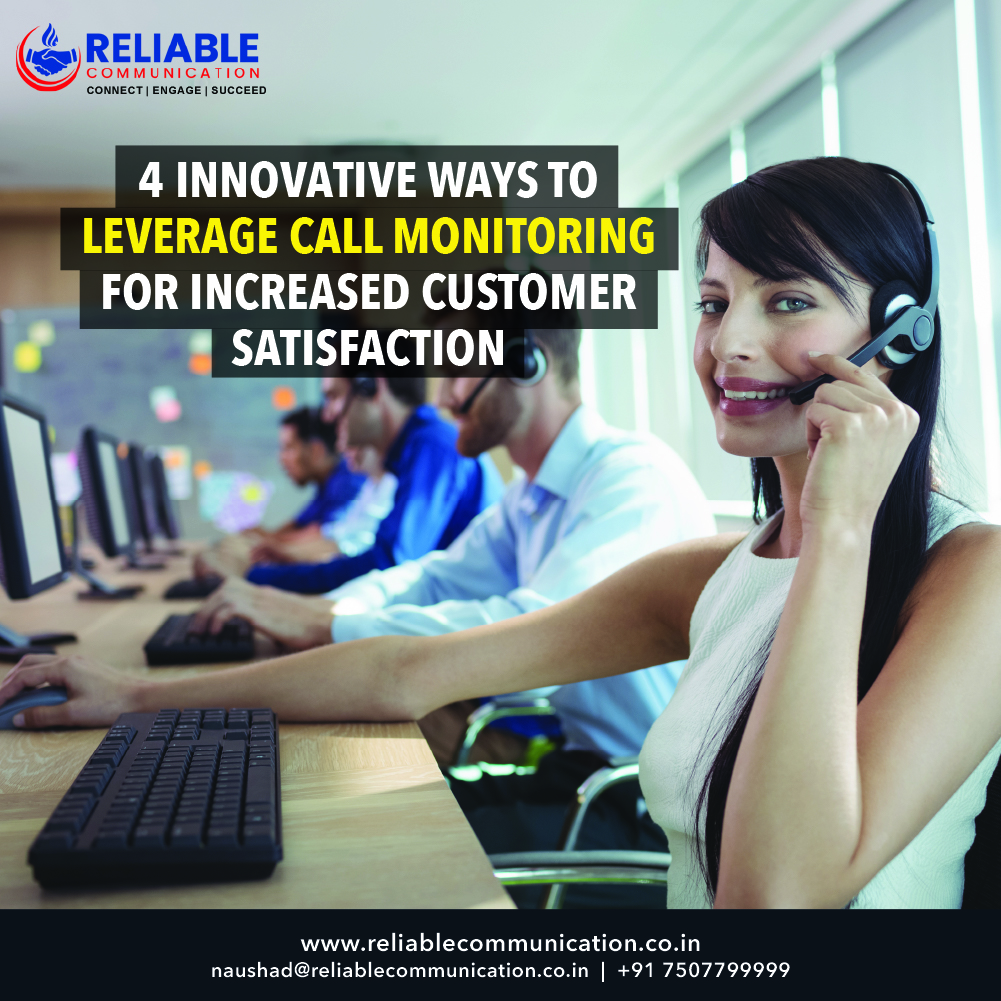Call monitoring is one of the most common and effective ways to understand your center’s training and quality needs. However, call center monitoring is just a tool; the power is in how you use it.
An effective customer experience strategy hinges on training, coaching, and supporting your agents during each and every interaction they have. When you have strong call monitoring practices, you can do this without straining your management and supervision team.
Benefits of call monitoring.
Customers, agents, and management at every level can experience the benefits of call monitoring. To start, you need a clear picture of your current training efforts and other KPIs.
With those firmly in place, managers can identify problem areas quickly and systematically.
This leads to a decrease in operating costs with an increase in customer satisfaction, engagement, and loyalty.
Management can access both historical and real-time data. This means they have an understanding of broad trends in contact center performance, like the efficiency of current operational processes, adherence to compliance standards, and opportunities for agent training and development.
Agents can use the data and manager feedback to improve first-call resolution rates, promptly address any performance concerns, and pinpoint areas where they need more support.
Accessing growth opportunities will lead to higher employee satisfaction and a more engaged workforce with less turnover.
The largest, overarching benefit of call monitoring? An excellent customer experience.
We find that contact centers maintaining call monitoring and review processes are able to resolve customer queries quickly and seamlessly. Many also find an uptick in agent morale and performance, as they have the necessary support needed to deliver truly exceptional assistance.
Four call monitoring software features–and how to use them.
Call monitoring is usually a standard part of cloud contact center solutions. However, the quality and implementation can vary.
Some solutions require that humans do the heavy lifting, like data sorting and entry. But that is time-consuming and expensive.
Powerful, AI-driven contact center monitoring tools allow you to do much more than just listen to calls. They simplify the process of quality assurance monitoring and allow agents and managers to see everything in easy-to-understand dashboards and reports
The best call monitoring software has all of the following features.
1. Double-listening and real-time monitoring from a distance.
Double-listening is usually reserved for inexperienced agents and those who need special support. Occasionally, call monitoring will include random quality assessments.
The challenge with double-listening is its time and labor requirements. Giving effective feedback to agents requires the manager to be fully engaged with call monitoring and give one-on-one feedback afterward. This naturally keeps them away from other high-value duties.
2. Whispering and AI-integrated support.
Like double-listening, whispering is time-consuming for management and requires that they work with just one agent at a time.
Providing tips and guidance is important for increasing first-call resolution, but whispering isn’t always the most practical way to offer that.
3. Call barging and passing context.
Call barging is often a step in the escalation process. Your management, your agent, and your customer are all speaking together to resolve an issue.
The question is, how long will it take to get your manager up to speed?
This can be time-consuming and frustrating for the caller, especially if they are required to wait on hold and re-explain their problem. Contact center software that has fully-trained AI can quickly pass the context and conversation summary to a manager and/or any subsequent agents that the customer might be transferred to.
4. Call recording and automatic summary.
Call recording can allow outside departments and teams to participate in the benefits of call monitoring. For example, your marketing team can review recordings to understand the customers’ problems, discover how customers talk about your products or services, access key information about the success of specific campaigns, and more.
Within your contact center, call recording can also be used in agent training exercises.
Call monitoring best practices and KPIs to incorporate.
There are many benefits to call monitoring, but in order to get a quality output, a few best practices must be followed.
KPIs like average handling time, average pickup time, and retroactive customer satisfaction scores only provide part of the picture. While they are an important part of the feedback process, call monitoring provides you with a deeper understanding of agents’ performance–at both an individual and team level. It takes away the guesswork and subjectivity of trying to identify ways to boost productivity and customer satisfaction in the future.
Here are a few tips for using real-time and retroactive call monitoring data to offer strong, actionable feedback:
- Tie your feedback to a performance goal, corporate value, departmental objective, or remediation plan.
- Supplement your feedback with data and excerpts from the call, so the agent gets complete clarity on the areas they are expected to improve.
- Collaborate with your agents to create an action plan for solving problems or improving KPIs.
- Log the feedback for each agent so everyone can keep track of performance.
Important legal notes for call monitoring.
United States federal law requires one-party consent, meaning you do not technically need to get consent from the caller to record them. That being said, some state laws require consent from the caller before you can monitor or record a conversation with customers.
International laws vary by country.
It is also important to note that most privacy and consent laws are based on the location of the customer, regardless of where the company is based, or where the contact center may be located.
To keep your company legal, safe, and respectful we recommend adding a pre-recorded statement indicating that all parties who remain on the call may be recorded. You can also require a keypad entry to confirm consent, though that may not be necessary.

